a
Well, since one-on-one time is crucial for building strong relationships, boosting self-esteem, and improving communication, we want to help you carve out the time specifically for this. Here’s how you can create meaningful one-on-one time with each of your children – no matter how busy you are.
Understand the need
Every child craves undivided attention from their parents. Therefore, it’s essential to recognise the signs
The post How to Create One-on-One Time With Each of Your Children appeared first on Schoolhouse Day Care.
]]>a
Well, since one-on-one time is crucial for building strong relationships, boosting self-esteem, and improving communication, we want to help you carve out the time specifically for this. Here’s how you can create meaningful one-on-one time with each of your children – no matter how busy you are.
Understand the need
Every child craves undivided attention from their parents. Therefore, it’s essential to recognise the signs that your child needs some extra attention. These signs can include acting out, becoming unusually quiet, or seeking constant approval. By being attuned to these signals, you can better meet your child’s emotional needs and strengthen your bond. 
Choose quality over quantity
It’s not about how much time you spend, but how you spend it. For example, a focused, distraction-free 10 minutes can be more valuable than an hour of divided attention. Make those minutes count by being fully present.
Schedule daily time
Set aside a specific time each day for one-on-one interactions. Whether it’s 10 minutes in the morning or a bedtime chat, consistency is key. Tailor this time to fit both your schedule and your child’s preferences, ensuring it becomes a cherished routine.
Utilise spontaneous moments
Life is full of unexpected opportunities for one-on-one time. Use car rides, meal prep, or even waiting in line as moments to engage with your child. These impromptu interactions can be just as meaningful as planned activities.

Join their activities
Show interest in your child’s hobbies and activities. Whether it’s playing a video game, reading a book, or building a model, participating in their interests shows that you value their passions and enjoy spending time together.
Plan longer sessions
Monthly or quarterly ‘dates’ with each child can create lasting memories. Especially, if you let them help plan these outings to ensure they are engaging and enjoyable. These special times can become treasured traditions that your child looks forward to.
a
Tips for maximising one-on-one time
Engage positively: Keep the interactions positive and engaging. Praise good behaviour, celebrate achievements, and focus on having fun together.
Minimise interruptions: To make the most of your one-on-one time, try to keep your other children occupied with their own activities. This helps minimise interruptions and allows you to focus solely on the child you’re with.
Avoid distractions: Put away your phone and other digital devices. Showing that you are fully present and attentive reinforces the importance of the time you’re spending together.
Be consistent: Even on busy or challenging days, strive to maintain your one-on-one time. Consistency shows your child that they are a priority, no matter what else is happening.
Be flexibile: Life can be unpredictable, so be flexible. If you miss a scheduled time, make it up later. The goal is to maintain an overall balance of attention and care.

Creating one-on-one time with each of your children is not about grand gestures but about consistent, meaningful interactions. By incorporating these practices into your daily routine, you can strengthen your relationships, boost your child’s self-esteem, and foster open communication.
a
Remember, the goal is to create positive and lasting memories, and even small efforts can make a significant difference. Don’t worry if you can’t be perfect all the time; what matters is the overall effort and the love you share.
At Schoolhouse Daycare, we enjoy learning, encouraging confidence and we love life! If you think your child would enjoy life at Schoolhouse, then please do not hesitate to arrange a visit.
Looking for more ideas and inspiration? See more from us here:
- 5 Benefits of Sharing A Family Meal
- How to build joy, connection, and calm into your daily family life
- 8 Strategies for Promoting Well-Balanced Technology Use for Families
- 15 Time-Saving Tips For Busy Parents
The post How to Create One-on-One Time With Each of Your Children appeared first on Schoolhouse Day Care.
]]>However, for those who feel like the chaos sometimes outweighs the time for calm and connection, this blog is for you. Here are some practical ways to build joy, connection, and calm into your daily family life.
The power of joy
Joy is a powerful force in a child’s emotional and mental development. It creates lasting positive memories and helps build a resilient mindset. When children experience
The post How to build joy, connection, and calm into your daily family life appeared first on Schoolhouse Day Care.
]]>However, for those who feel like the chaos sometimes outweighs the time for calm and connection, this blog is for you. Here are some practical ways to build joy, connection, and calm into your daily family life.
The power of joy
Joy is a powerful force in a child’s emotional and mental development. It creates lasting positive memories and helps build a resilient mindset. When children experience joy, they’re more likely to feel confident, curious, and engaged with the world around them.
Tips for increasing joy
- Engage in playful activities: Whether it’s outdoor games, board games, or imaginative play, these activities allow children to express themselves and bond with you.
- Celebrate small wins: Celebrate your child’s small wins, be it a good grade, a new skill, or even a kind gesture. These celebrations don’t have to be extravagant—sometimes a high-five or a special dinner can make all the difference.
- Create traditions: Family traditions, no matter how simple, give children something to look forward to. It could be a weekly movie night, Sunday morning pancakes, or an annual camping trip. These traditions create a sense of continuity and belonging.
- Encourage hobbies and interests: Support your child’s passions, whether it’s drawing, football, reading, or dancing. By encouraging their interests, you help them find joy in their pursuits and build self-esteem.

Tips to strengthen your connection
- Practice active listening: Active listening means giving your child your full attention, showing empathy, and validating their feelings without judgment.
- Think quality time, not quantity: Spending undistracted time with your child is crucial. Engage in activities that promote bonding, such as cooking together, reading bedtime stories, or taking nature walks.
- Communicate openly: Encourage open and honest dialogue with your child. Create a safe space where they feel comfortable expressing their thoughts and feelings. Use age-appropriate communication techniques to ensure they understand and feel heard.
- Be physically affectionate: Never underestimate the power of a cuddle. Physical affection helps children feel secure and loved, strengthening their emotional bond.
- Use technology wisely: Balancing screen time with face-to-face interactions is essential. Use technology as a tool for connection—such as video calls with distant relatives—but also make time for tech-free family activities.

Creating a peaceful family environment
When parents model calm behaviour, it teaches children how to handle stress and challenges with composure. Here are four ways you can create a calm and peaceful family environment:
Routine and structure
A consistent daily routine provides predictability, reducing anxiety and creating a sense of safety for children. Knowing what to expect helps them feel more in control and less stressed.
Mindful parenting
Practising mindful parenting means staying present and composed, even in challenging situations. By modelling calm behaviour, you teach your children valuable coping skills.
Stress-reduction techniques
Incorporate stress-reducing activities into your family routine, such as yoga, deep breathing exercises, or quiet reading time. Creating a calming space at home, perhaps a cosy corner with soft lighting and books can also help. 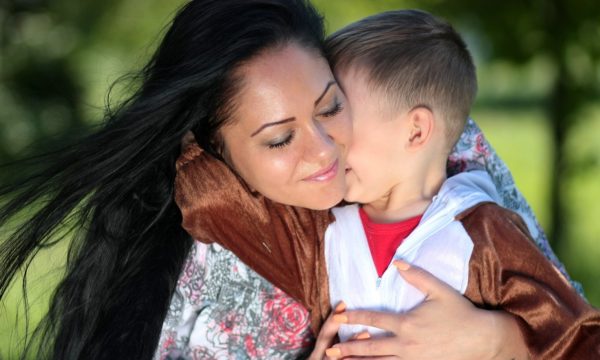
Handling conflicts calmly
Conflicts are inevitable, but handling them calmly can teach your child vital conflict-resolution skills. Approach disagreements with a calm and rational mindset, and encourage your child to express their feelings and work towards a solution together.
a
Bringing more joy, connection, and calm in your family life are essential steps towards a happier, healthier dynamic. These strategies benefit your child’s development, enhance your relationship, and create a loving, supportive environment. After all, parenting is about the journey, and with a bit of joy, connection, and calm, it can be the most rewarding adventure of all.
At Schoolhouse Daycare, we enjoy learning, encouraging confidence and we love life! If you think your child would enjoy life at Schoolhouse, then please do not hesitate to arrange a visit.
Looking for more ideas and inspiration? See more from us here:
- 5 Benefits of Sharing A Family Meal
- How to Create One-on-One Time With Each of Your Children
- 8 Strategies for Promoting Well-Balanced Technology Use for Families
- 15 Time-Saving Tips For Busy Parents
The post How to build joy, connection, and calm into your daily family life appeared first on Schoolhouse Day Care.
]]>Here are some practical ways to reduce stress, manage it better, and make sure you’re looking after yourself.
Recognise and address stress
First things first, you need to spot the signs of stress. Parental burnout might show up as feeling overwhelmed, anxious, irritable, or just plain exhausted, so when you
The post Parenting without burnout? How to manage stress and thrive appeared first on Schoolhouse Day Care.
]]>Here are some practical ways to reduce stress, manage it better, and make sure you’re looking after yourself.
Recognise and address stress
First things first, you need to spot the signs of stress. Parental burnout might show up as feeling overwhelmed, anxious, irritable, or just plain exhausted, so when you notice these red flags, it’s time to take action.
Little things like a brisk walk, a cuppa, or some deep breathing can work wonders to help you stay balanced and fend off burnout.

Stress management techniques to reduce parental burnout
- Deep breathing: When parental burnout hits, deep breathing can help calm your nervous system. Inhale slowly and deeply, then exhale just as slowly. Do this for a few minutes each day to keep stress at bay.
- Physical activity: Regular exercise reduces stress hormones and boosts endorphins, lifting your mood. Even short bursts of activity, like a quick jog or dancing with your kids, can make a big difference.
- Mindfulness and meditation: Practicing mindfulness or meditation helps you stay present and reduces anxiety. There are plenty of apps and online resources to guide you through these calming practices.
Self-care strategies
- Prioritise sleep: Getting enough sleep is crucial, especially since poor sleep can worsen stress and parental burnout. The solution? Create a calming bedtime routine and a restful sleep environment.
- Healthy diet: Eating a balanced diet can boost your energy levels and improve your mood. Make sure to include plenty of fruits, veggies, and whole grains in your meals.
- Set boundaries: Learn to say no and set boundaries to protect your time and energy. This might mean delegating tasks or asking for help from family and friends. Remember, it’s okay to prioritise your own needs to combat parental burnout.

Building a support system
- Seek social support: Sharing experiences and advice can provide emotional relief and practical tips, helping you manage parental burnout more effectively.
- Professional help: If stress becomes overwhelming, don’t hesitate to seek help from a counsellor or therapist. Professional guidance can offer strategies tailored to your situation, making it easier to cope.
- Family involvement: Get your family involved in your self-care routine. This includes co-parenting strategies where responsibilities are shared more equitably, easing the burden on you.
Incorporating positivity and play
- Focus on the positives: Celebrate small victories and enjoy quality time with your children to combat parental burnout.
- Problem-solving: When faced with challenges, break them down into smaller tasks and tackle them one at a time.
- Playtime: Play is a natural stress reliever and helps build a stronger parent-child bond, which can significantly reduce feelings of burnout.

Taking care of yourself is key!
Tackling parental burnout means recognising stress, using effective stress management techniques, practicing self-care, building a support system, and adding positivity and play into your daily routine.
Always remember, looking after yourself isn’t a luxury – it’s a necessity for being the best parent you can be.
At Schoolhouse Daycare, we enjoy learning, encouraging confidence and we love life! If you think your child would enjoy life at Schoolhouse, then please do not hesitate to arrange a visit.
Looking for more ideas and inspiration? See more from us here:
- How to Prioritise Self-Care as a Parent
- How Can a Busy Mum or Dad Practice Self-Care?
- 7 Tips for Meal Planning No Matter How Busy You Are
- Age Appropriate Chores for Children to Help Them Learn Valuable Life Skills
The post Parenting without burnout? How to manage stress and thrive appeared first on Schoolhouse Day Care.
]]>The importance of mindfulness
Mindfulness is all about being present and aware of your thoughts and feelings without distraction. For both children and adults, it can work wonders by reducing anxiety, boosting focus, and improving emotional control.
Yoga for children can be a fantastic way to introduce mindfulness. This activity not
The post Nurturing young minds with the power of yoga for children and adults appeared first on Schoolhouse Day Care.
]]>The importance of mindfulness
Mindfulness is all about being present and aware of your thoughts and feelings without distraction. For both children and adults, it can work wonders by reducing anxiety, boosting focus, and improving emotional control.
Yoga for children can be a fantastic way to introduce mindfulness. This activity not only helps children stay calm and focused but also supports their overall mental and emotional well-being.

Yoga as a tool for mindfulness
Yoga is a fantastic way to promote mindfulness, combining physical postures, breathing exercises, and meditation. These elements work together to help children and adults focus on the present moment.
Specific techniques, like balance poses and visualisation through storytelling, make yoga for children engaging and effective. These activities not only enhance physical health but also teach children to stay calm and attentive, improving their overall mental well-being.
Benefits of mindfulness and yoga for children
Yoga and mindfulness help children:
- Manage their emotions, leading to better self-awareness and acceptance. This emotional regulation is crucial for their overall development.
- Concentrate and focus better, aiding their performance in everyday activities.
- Physically. Yoga enhances flexibility, strength, and coordination, supporting overall physical health.

Benefits of yoga and mindfulness for adults
Yoga and mindfulness aren’t just for our children, they can also benefit adults. Activities lead to:
- Stress reduction:
- Helps reduce stress levels
- Promotes relaxation and calmness
- Improved mental health:
- Reduces symptoms of depression
- Alleviates anxiety
- Physical wellbeing:
- Increases flexibility
- Builds strength
- Enhances overall fitness
Integrating yoga and mindfulness into daily life
For children, parents and educators can integrate yoga and mindfulness into daily routines through simple practices. For example:
- Starting the day with morning stretches that include yoga for children can set a positive tone.
- Mindfulness breaks during school help children stay focused and calm.
- Bedtime yoga helps them unwind and get ready for a good night’s sleep.

Adults can benefit too!
- Scheduling yoga sessions before or after work can relieve stress and promote relaxation.
- Mindfulness exercises during breaks keep you centred and calm.
- Short breathing exercises throughout the day help maintain a sense of tranquillity amidst the busyness.
Embracing mindfulness and yoga for a balanced life
Early Years Wellbeing Week is a perfect opportunity to embrace these practices and incorporate them into daily life. By doing so, we embrace a more balanced and harmonious lifestyle for ourselves and our children.
As Sharon Salzberg wisely said, “Mindfulness isn’t difficult, we just need to remember to do it.” Embracing yoga and mindfulness can pave the way for long-term wellbeing and a more fulfilling life!
At Schoolhouse Daycare, we enjoy learning, encouraging confidence and we love life! If you think your child would enjoy life at Schoolhouse, then please do not hesitate to arrange a visit.
Looking for more ideas and inspiration? See more from us here:
- How to Recognise if Your Child is Stressed and What to Do
- 12 Fun Learning Activities Your Kids Can Do at Home
- Nurturing Wellbeing and Emotions: How to Help Your Children Identify and Manage Their Feelings
- Why it is Essential to Encourage a Growth Mindset in Your Children
The post Nurturing young minds with the power of yoga for children and adults appeared first on Schoolhouse Day Care.
]]>In this article, we explore why this is, particularly the science behind play and how it helps the young brain develop.
From brain development and emotional resilience to its essential role in healthy human growth, here is why play is so crucial and what you can do as parents to support and encourage this development.
a
The neurological foundations of play
Play is vital for brain development, quickly establishing complex neural networks in babies that form the basis for their future cognitive, emotional, and physical growth. Infants strengthen these connections by exploring their surroundings and interacting
The post The brain science of play appeared first on Schoolhouse Day Care.
]]>In this article, we explore why this is, particularly the science behind play and how it helps the young brain develop.
From brain development and emotional resilience to its essential role in healthy human growth, here is why play is so crucial and what you can do as parents to support and encourage this development.
a
The neurological foundations of play
Play is vital for brain development, quickly establishing complex neural networks in babies that form the basis for their future cognitive, emotional, and physical growth. Infants strengthen these connections by exploring their surroundings and interacting with sensory stimuli.
Reaching for colourful objects, listening to sounds, or tasting different textures, serves as a brain workout, reinforcing and creating new neural pathways. This early sensory play is vital as it challenges and expands the brain’s capabilities, making it more adaptable and strong.
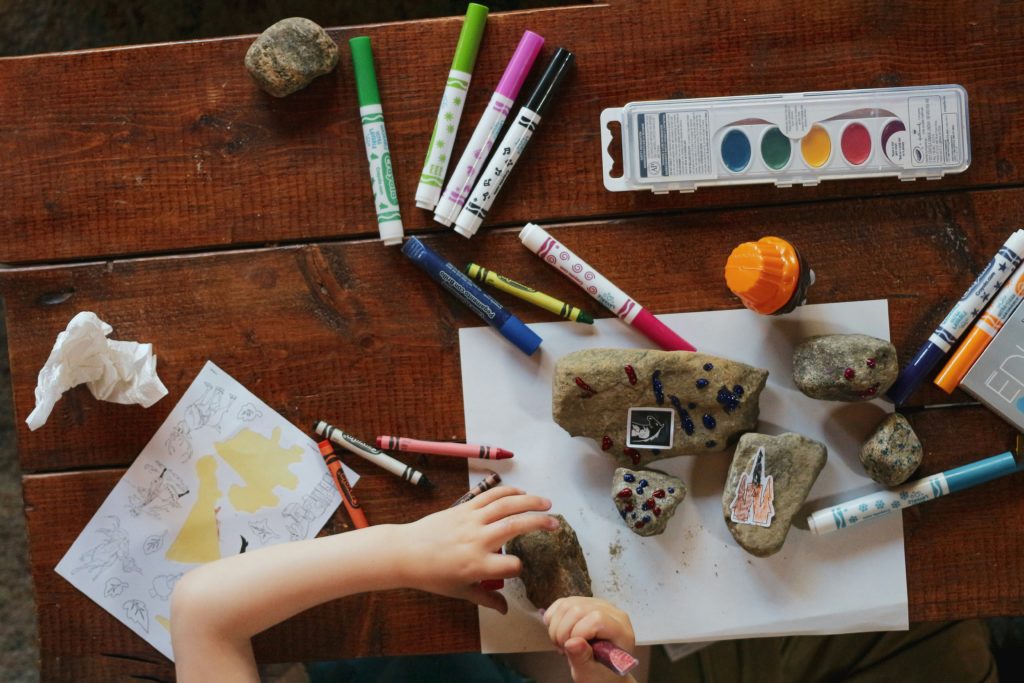
a
Key learning through play
Understanding the importance of play in childhood development highlights its many benefits that extend into adulthood:
Sensory exploration
- Cognitive development: Grasping cause and effect through interactions with various sensory stimuli emphasises the importance of play in cognitive skill building.
- World understanding: Children learn how their actions impact their environment, a key insight provided by the importance of play.
Repetitive play
- Motor skill improvement: Activities such as stacking blocks or solving puzzles encourage refining motor skills.
- Cognitive skill enhancement: The importance of play is evident as it reinforces knowledge, encourages persistence, and supports skill development.
Role-playing and decision-making:
- Social skill enhancement: Through assuming various roles and navigating social scenarios, children learn the importance of play in developing complex social skills.
- Emotional intelligence growth: Play is crucial in building empathy, cooperation, and the ability to understand social cues.

Long-term impact:
- Mental health promotion: Play is crucial as it develops the psychological tools needed to manage stress and challenges later in life.
- Problem-solving enhancement: Adults who experienced diverse play as children typically show more flexible thinking, highlighting the lasting benefits of play.
a
Supporting and encouraging Play
Now we understand how important play if for development, here are effective ways to nurture play:
- Create diverse play environments: Set up spaces that spark curiosity and imagination, such as colourful playrooms filled with toys and outdoor areas for nature exploration.
- Allow unstructured play: Let children play freely without too much guidance from adults. Unstructured play ignites creativity, problem-solving skills, and independence.
- Promote social play: Social play is crucial for developing emotional and social skills. By playing with peers, children learn to cooperate, negotiate, and empathise. Organising playdates or participating in community playgroups are great ways to support this.
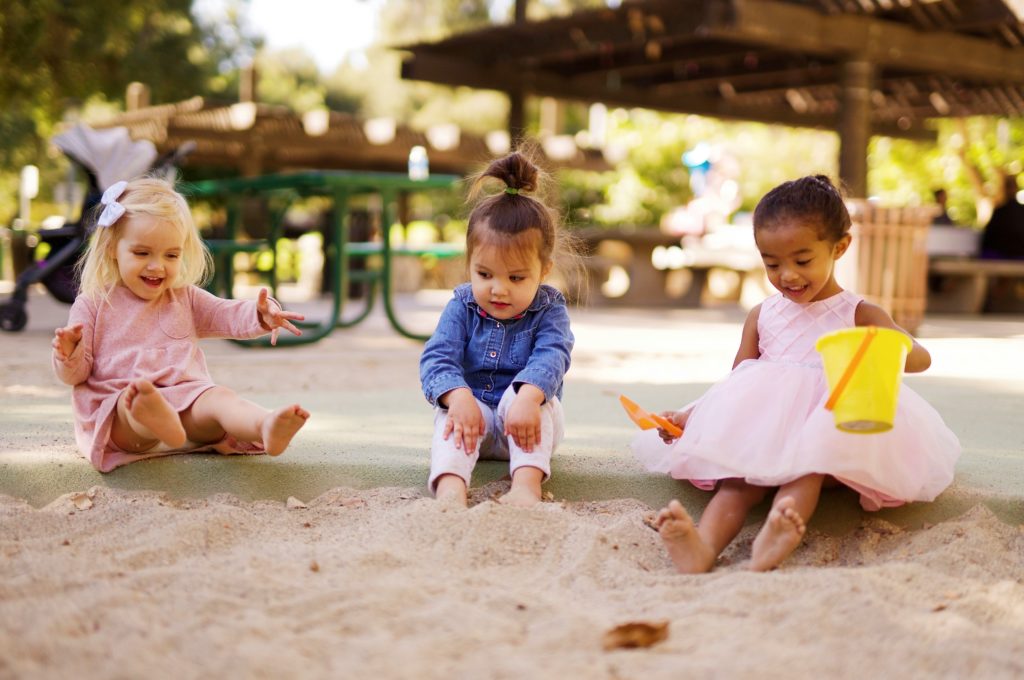
By taking these steps, we can reinforce the importance of play and ensure children have the necessary environments and opportunities to thrive.
The importance of play in developing a well-rounded, resilient individual cannot be overstated. Play is not only fundamental for cognitive and emotional growth but is also crucial in laying the groundwork for healthy mental and social capabilities later in life. As we’ve explored, play shapes the brain, influences lifelong well-being, and prevents negative developmental outcomes.
___________________________________________
At Schoolhouse Daycare, we enjoy learning, encouraging confidence and we love life! If you think your child would enjoy life at Schoolhouse, then please do not hesitate to arrange a visit.
Need more help or advice? Find more from us here:
- Fascinating facts about children’s brains during the Early years
- How to Choose the Best Educational Toys: the Ultimate Guide for Parents
- Age Appropriate Chores for Children to Help Them Learn Valuable Life Skills
- The Secrets to Handling Toddler Tantrums like a Pro
The post The brain science of play appeared first on Schoolhouse Day Care.
]]>Need help with some ideas? Here´s why spring activities are so important along with our top ideas to help with your child´s learning and development.
The benefits of outdoor learning in spring
Outdoor play is so important for children as they grow – here´s why:
Enhanced physical development: Spring activities encourage children to be active, improving their physical strength, coordination, and overall fitness.
Stimulated curiosity and exploration: The vibrant spring environment, with its new life
The post Springtime learning and development: the benefits and 6 spring activities for kids appeared first on Schoolhouse Day Care.
]]>Need help with some ideas? Here´s why spring activities are so important along with our top ideas to help with your child´s learning and development.
The benefits of outdoor learning in spring
Outdoor play is so important for children as they grow – here´s why:
- Enhanced physical development: Spring activities encourage children to be active, improving their physical strength, coordination, and overall fitness.
- Stimulated curiosity and exploration: The vibrant spring environment, with its new life and growth, naturally increases children’s curiosity and exploration.
- Improved mental well-being: Time spent outdoors in the fresh spring air can significantly boost mood, reduce stress, and enhance mental well-being.
- Hands-on learning: From observing plant growth to understanding weather changes, spring offer invaluable hands-on learning opportunities.
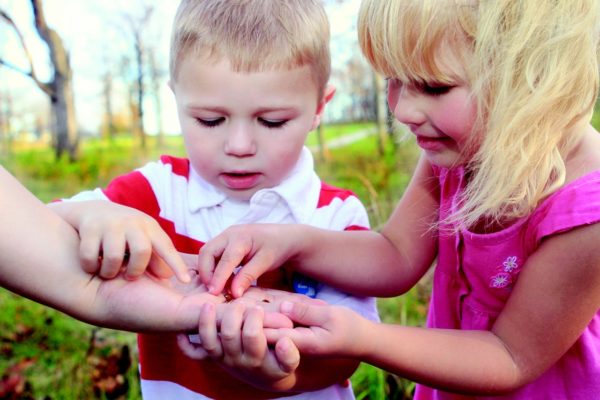 .
. - Increased connection with nature: Spring encourages a deeper appreciation and understanding of the natural world and environment.
- Enhanced social skills: Outdoor activities often involve teamwork and communication, helping children to develop their social skills and make new friends.
- Boosted creativity and imagination: The stimulating outdoor environment of spring can inspire creativity and imaginative play, both of which are essential components of cognitive development.
Top spring activities for kids that promote physical wellbeing
As the days grow longer and the weather warms up, here are some of the best spring activities for kids to get them moving, learning, and soaking up the season’s joys, all while promoting their physical well-being.
Nature walks and scavenger hunts: These adventures are brilliant for encouraging little explorers to hone their observation and curiosity skills, all while giving their physical fitness a boost.
Gardening projects: Getting their hands dirty is great for developing those fine motor skills. Why not start with some simple projects like planting a mix of colourful flowers or easy-to-grow veggies?

Outdoor art and craft: Think grand nature collages or vibrant sidewalk chalk art that gets them moving and creating.
Water play and exploration: From a makeshift water table in the backyard to conducting simple water-based experiments, the possibilities are endless.
Biking and obstacle courses: Whether it’s a leisurely family bike ride or a thrilling obstacle course set up in the garden. These activities are great for improving coordination and building physical endurance.

Picnics with a twist: Elevate the classic picnic with a dash of active fun. Toss in some games and physical activities like frisbee, catch, or even a mini-sports day to make those picnic outings extra special and lively.
Incorporating learning into physical activities
Merging education with physical activity can turn every outdoor adventure into a learning opportunity. Here’s how:
- Counting games during a hike: Transform a simple hike into a maths lesson by counting steps, trees, or even birds along the path.
- Learning about plant life while gardening: Use gardening time to teach about different plant species, their growth cycles, and the importance of biodiversity.

As spring rolls in, it’s the perfect time to get our kids moving and grooving outdoors. These fun activities aren’t just great for their health; they’re also a fab way to spend some quality family time. So, let’s make the most of this lovely season and help our little ones grow strong and happy.
At Schoolhouse Daycare, we enjoy learning, encouraging confidence and we love life! If you think your child would enjoy life at Schoolhouse, then please do not hesitate to arrange a visit.
Looking for more ideas and inspiration? See more from us here:
- Fun Spring Activities to Do as a Family this Spring
- The Big Benefits of Outside Play for Nursery Children
- Gardening with children: tips for getting them involved and interested!
- 5 Ways to Make Happy Memories this Summer
The post Springtime learning and development: the benefits and 6 spring activities for kids appeared first on Schoolhouse Day Care.
]]>Here we will take a look at the vital role early reading plays in shaping the minds and futures of our children.
Why is early reading important?
Cognitive development
Early reading experiences are like a workout for the young brain. These experiences boost cognitive abilities, laying the foundation for critical thinking, problem-solving, and memory skills. As children navigate the twists and turns of narratives, they’re also constructing the mental pathways for complex thought.
Language and
The post Why early reading experiences are important for children (and how to provide opportunities) appeared first on Schoolhouse Day Care.
]]>Here we will take a look at the vital role early reading plays in shaping the minds and futures of our children.
Why is early reading important?
Cognitive development
Early reading experiences are like a workout for the young brain. These experiences boost cognitive abilities, laying the foundation for critical thinking, problem-solving, and memory skills. As children navigate the twists and turns of narratives, they’re also constructing the mental pathways for complex thought.
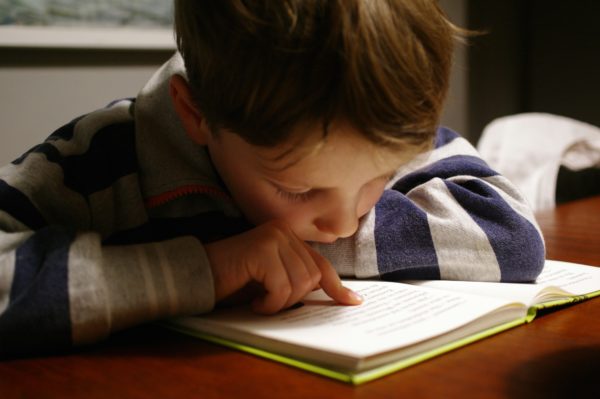
Language and communication skills
Beyond cognitive development, early literacy opens the door to rich language and effective communication. Immersing children in a world of words expands their vocabulary and improves their ability to express themselves.
Social and emotional development
Shared early reading experiences weave the very fabric of social and emotional understanding. As children and caregivers read together, they embark on a journey of empathy, learning to walk in the shoes of different characters.
School readiness
The leap from the cosy lap of reading time to the structured environment of a classroom is made smoother by early literacy. Early reading experiences equip children with the toolkit they need to thrive in school, from staying engaged in classroom activities to following complex instructions.

Lifelong learning
Early literacy is just the prologue to a lifelong adventure in learning. It plants the seeds of curiosity and wonder, nurturing a love for reading that blossoms into an endless quest for knowledge.
How to provide opportunities for early reading
Create a literacy-rich environment
Picture this: cosy reading nooks where stories come to life. Shelves brimming with books and every corner whispering tales waiting to be discovered. It’s about weaving literacy into the fabric of daily life.

Read aloud
Reading aloud to children is akin to opening a treasure chest of words and wonders. As you bring characters and plots to life with the lilt of your voice, you’re not just entertaining; you’re laying the groundwork for robust listening and comprehension skills that echo far beyond the pages of any book.
Engage in conversations and storytelling
Turn every day into the extraordinary, where each question and tale shared becomes a stepping stone for language development and critical thinking. Encourage your little ones to ponder, question, and narrate their own stories.
Provide access to books and resources
By ensuring access to a diverse array of books and literacy resources, we unlock endless possibilities for exploration and discovery. Libraries become treasure troves, bookstores turn into gateways to new worlds, and online platforms offer a universe of stories at their fingertips.
Encourage writing and drawing
Early reading experiences are not just about the words we read but also about the ones we create. Through scribbles, tracing letters, and painting pictures, they’re weaving their narratives, connecting the dots between the language they hear and the stories they tell.

Early literacy is a key that unlocks potential, evens the playing field, and opens doors to endless possibilities.
To parents, caregivers, and educators: your role in this journey is invaluable. Through shared stories and united efforts, we can ensure every child holds the key to their own limitless story.
At Schoolhouse Daycare, we enjoy learning, encouraging confidence and we love life! If you think your child would enjoy life at Schoolhouse, then please do not hesitate to arrange a visit.
Looking for more ideas and inspiration? See more from us here:
- Why Reading is So Important in the Early Years
- 9 Big Benefits of Reading to Your Child
- The 6 Best Potty Training Books (For Parents and Toddlers)
- Screen Free Activity Ideas To Do As A Family
The post Why early reading experiences are important for children (and how to provide opportunities) appeared first on Schoolhouse Day Care.
]]>Enhancing emotional wellbeing
Isn’t it amazing how a simple act of kindness can light up your day? Random acts of kindness for families aren’t just about making others smile; it’s a surefire way to boost your happiness too!
When we’re kind to others, it’s like a happiness boomerang – it comes right back to us, reducing stress and making
The post Random Acts of Kindness Day: the Benefits for Families appeared first on Schoolhouse Day Care.
]]>Enhancing emotional wellbeing
Isn’t it amazing how a simple act of kindness can light up your day? Random acts of kindness for families aren’t just about making others smile; it’s a surefire way to boost your happiness too!
When we’re kind to others, it’s like a happiness boomerang – it comes right back to us, reducing stress and making everyone feel good. Plus, these acts of kindness are great for our mental health, helping to ease anxiety and keep those pesky blues at bay.
Strengthening family bonds
Whether it’s baking cookies for a neighbour or picking up litter in the park, these shared moments of generosity do more than just help others; they bring us closer together!
Acts of kindness open up new ways to chat, laugh, and connect, deepening our family bonds. They remind us that we’re a team, creating a warm sense of belonging and mutual respect.

Promoting empathy and compassion in children
When we dive into random acts of kindness for families, we’re setting the stage for our children to grow into truly empathetic and compassionate people. Kindness activities are like empathy workouts for kids, helping them to put themselves in others’ shoes and feel what they feel.
Empathy is an essential skill —it’s the foundation for strong friendships, healthy relationships, and just being a good person all around. For more insights and practical ways to teach your child about kindness, check out our blog: How to Teach Your Child Kindness.
Encouraging positive behaviour and social skills
These moments teach kids about the joy of giving without expecting anything in return and the importance of being part of a community. And guess what? These lessons stick. The social skills and sense of responsibility kids learn from kindness play a huge role in their success at school, in future jobs, and in life in general. So, by fostering kindness, we’re giving our kids a head start on a path to a bright and positive future.

Building a foundation for selflessness
Getting into the habit of random acts of kindness with your family plants the seeds of altruism in your children that can grow throughout their lives. When kindness becomes a regular part of their world, it becomes second nature for them to think about others and lend a helping hand without a second thought.
Creating a positive home environment
When families make random acts of kindness a part of their routine, they’re building a home environment where support and positivity thrive. This kindness reduces squabbles and misunderstandings, making room for more peace and harmony.

We’ve seen how random acts of kindness for families can do wonders, from making us happier and closer to teaching valuable life lessons. As Random Acts of Kindness Day draws near, let’s embrace it as a chance to bring more kindness into our lives and the world around us. Every small act counts, creating a ripple effect that can transform communities.
At Schoolhouse Daycare, we enjoy learning, encouraging confidence and we love life! If you think your child would enjoy life at Schoolhouse, then please do not hesitate to arrange a visit.
Looking for more ideas and inspiration? See more from us here:
- How to Teach Your Children about Love and Kindness
- How to Connect with Your Child Using Their Love Language
- Why it is Essential to Encourage a Growth Mindset in Your Children
The post Random Acts of Kindness Day: the Benefits for Families appeared first on Schoolhouse Day Care.
]]>What is professional love?
Dr. Jools Page introduced the professional love in early years concept to describe the unique care educators provide, distinct from but complementary to parental love.
While
The post Professional Love in Early Years Settings: Why it´s Essential appeared first on Schoolhouse Day Care.
]]>What is professional love?
Dr. Jools Page introduced the professional love in early years concept to describe the unique care educators provide, distinct from but complementary to parental love.
While parental love is, of course, deep and personal, professional love is more about providing a supportive, caring environment in a more educational setting.
Why is professional love important?
Emotional warmth and care are crucial for children to thrive, going way beyond just being nice to them. Professional love in early years education means really understanding what each child needs and building trusty relationships.
It’s not just about cuddles and kind words (though they’re important!). Professional love is about making children feel at home while keeping things professional. It’s about seeing them as whole people, where feeling good and safe is just as important as learning their ABCs.
Children who feel loved and secure are more curious, more eager to learn, and get along better with others. It’s all about being there for them in the right way, whether that’s with a comforting chat or just being by their side when they need it.
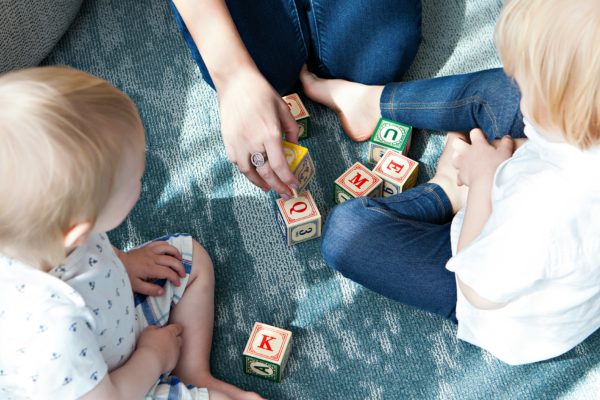
How professional love in early years works in practice
For parents, understanding how professional love in early years is applied can be reassuring. Here are some ways we put it into action at our daycare:
- We build trust with transparent communication: We regularly engage with families to build a foundation of trust. For example, we share insights about your child’s day, discuss developmental milestones, and are open about our caregiving approach.
- We focus on a responsive caregiving approach: We tailor our interactions to meet the individual needs of each child. For example, using Dr. Page’s Triangle of Professional Love (ToPL) as a guide to understand and respond to the emotional and developmental needs of children, we can ensure our approach is both caring and professional.
- We invest in our own professional development in emotional literacy: We invest in training for staff on understanding and managing our own emotions as well as recognising and responding to the emotions of children. This helps in nurturing emotional connections within professional boundaries.
- We establish clear policies and guidelines: We develop and communicate clear guidelines on physical contact, confidentiality, and interpersonal interactions within the setting. This helps staff understand their roles with confidence and clarity.
- We foster community and practice cultural sensitivity: We understand and respect the diverse backgrounds of the children in our care. Incorporating cultural sensitivity into our practice strengthens relationships with families and helps children feel valued and understood.
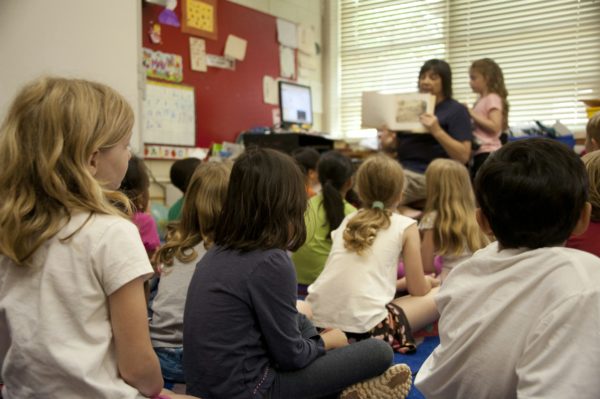
The transformative power of professional love in early years
The impact of professional love in early years is profound, benefiting both children and educators. It creates a secure environment where children feel valued, boosting their eagerness to learn and explore.
Understanding professional love helps parents see the value in early years education, not just for academic learning but for emotional and social development too. It’s about ensuring every child feels supported, understood, and ready to take on the world.
At Schoolhouse Daycare, we enjoy learning, encouraging confidence and we love life! If you think your child would enjoy life at Schoolhouse, then please do not hesitate to arrange a visit.
Looking for more ideas and inspiration? See more from us here:
- Creating a Strong Foundation: Why Day Nurseries Are Essential for Early Learning
- What are the Benefits of Sending Your Child to Nursery?
- Nurturing Wellbeing and Emotions: How to Help Your Children Identify and Manage Their Feelings
The post Professional Love in Early Years Settings: Why it´s Essential appeared first on Schoolhouse Day Care.
]]>Role model emotional behaviour
As a parent, you’re the blueprint your children follow for managing emotions. By demonstrating calm and composed reactions in your own life, you’re teaching your children the art of emotional control. Remember, in teaching
The post Nurturing Wellbeing and Emotions: How to Help Your Children Identify and Manage Their Feelings appeared first on Schoolhouse Day Care.
]]>Role model emotional behaviour
As a parent, you’re the blueprint your children follow for managing emotions. By demonstrating calm and composed reactions in your own life, you’re teaching your children the art of emotional control. Remember, in teaching your children to manage their emotions, your actions often speak louder than your words.
Have conversations about emotions and feelings
Regular discussions about emotions are essential to help your children manage their feelings. Encourage them to identify and express their feelings, from happiness to sadness. These talks help them understand their emotions, making it easier to navigate their emotional landscape as they grow.

Teach them to recognise the emotions of others
Help your children manage their feelings by helping them recognise and empathise with the feelings of others. Start by using picture cards to help them identify facial expressions associated with various feelings. You can also engage in role-playing activities to guess each other’s emotions and encourage active listening during interactions with others, paying attention to tone of voice and body language cues.
This creates and encourages empathy and social awareness, which is essential for emotional intelligence and compassion.
Encourage positive behavior
Praise your child for positively managing their emotions, as this reinforcement guides them towards healthier emotional responses. It’s about nurturing emotional intelligence with recognition and support, valuing each step towards their emotional maturity.

Understand environmental impact
Children’s emotions are influenced by sleep, nutrition, and sensory experiences. By ensuring proper rest and a balanced environment, you’re teaching your children to manage their emotions, tackling the basics of their daily lives for emotional stability.
Develop coping strategies
Equip your children with a toolkit of coping mechanisms for those times when emotions run high. Whether it’s a quiet corner for calming down, creative outlets like drawing, or simple breathing exercises, these strategies can be lifesavers during emotional storms.
Encouraging them to find what works best for them not only empowers them but also instils a sense of control over their emotional responses. Remember, teaching your children to manage their emotions is about providing them with the tools to build their resilience.
Provide a safe emotional space
Creating a safe and supportive emotional environment is crucial in teaching your children to manage their emotions. Be their constant support, even in times of emotional turmoil. Your empathy and understanding provide a secure foundation, reinforcing that it’s acceptable to feel and express emotions. This safety net is essential for helping them navigate their feelings confidently and healthily.

Nurture emotional intelligence
By modelling, discussing, and encouraging healthy emotional habits, you’re laying the foundation to help your children manage their feelings effectively. Then, as they grow, these lessons will become invaluable tools, and they´ll be their best selves when understanding and interacting with the world.
___________________________________
At Schoolhouse Daycare, we enjoy learning, encouraging confidence and we love life! If you think your child would enjoy life at Schoolhouse, then please do not hesitate to arrange a visit.
Need more help or advice? Find more from us here:
- How to Teach Your Children about Love and Kindness
- How to Recognise if Your Child is Stressed and What to Do
- 5 Tips For Parents Dealing With Separation Anxiety
- The Secrets to Handling Toddler Tantrums like a Pro
The post Nurturing Wellbeing and Emotions: How to Help Your Children Identify and Manage Their Feelings appeared first on Schoolhouse Day Care.
]]>